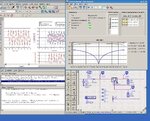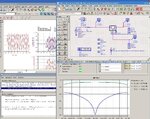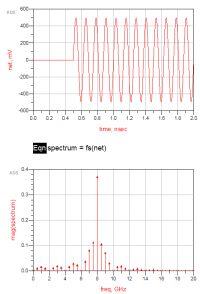votientu
Member level 2
Hello,
I have a simulation in the ADS Transient where I have a 3 ports imported S-parameters.
The time domain source is the sin wave at 8 GHz and at this frequency the S21 and S31 are at the same level (only the phase shift of 180 degree).
But the voltages at two outputs ports are not at the same level. Could you explain me why ?
I did the test where I replace the 3 ports S-parameters by the ideal power divider, the outputs are at the same level.
I also verified the 3 ports imported S-parameters with the S-parameter simulation in ADS and the outputs are at the same level at 8 GHz.
I have also the warning "Highest frequency in data is 1e+10 Hz, which is smaller than the maximum source bandwidth 4.8e+10 Hz." meanwhile my voltage source is only at 8 GHz.
Thanks for your help !
View attachment TDK.tar.gz

I have a simulation in the ADS Transient where I have a 3 ports imported S-parameters.
The time domain source is the sin wave at 8 GHz and at this frequency the S21 and S31 are at the same level (only the phase shift of 180 degree).
But the voltages at two outputs ports are not at the same level. Could you explain me why ?
I did the test where I replace the 3 ports S-parameters by the ideal power divider, the outputs are at the same level.
I also verified the 3 ports imported S-parameters with the S-parameter simulation in ADS and the outputs are at the same level at 8 GHz.
I have also the warning "Highest frequency in data is 1e+10 Hz, which is smaller than the maximum source bandwidth 4.8e+10 Hz." meanwhile my voltage source is only at 8 GHz.
Thanks for your help !
View attachment TDK.tar.gz

Last edited:






